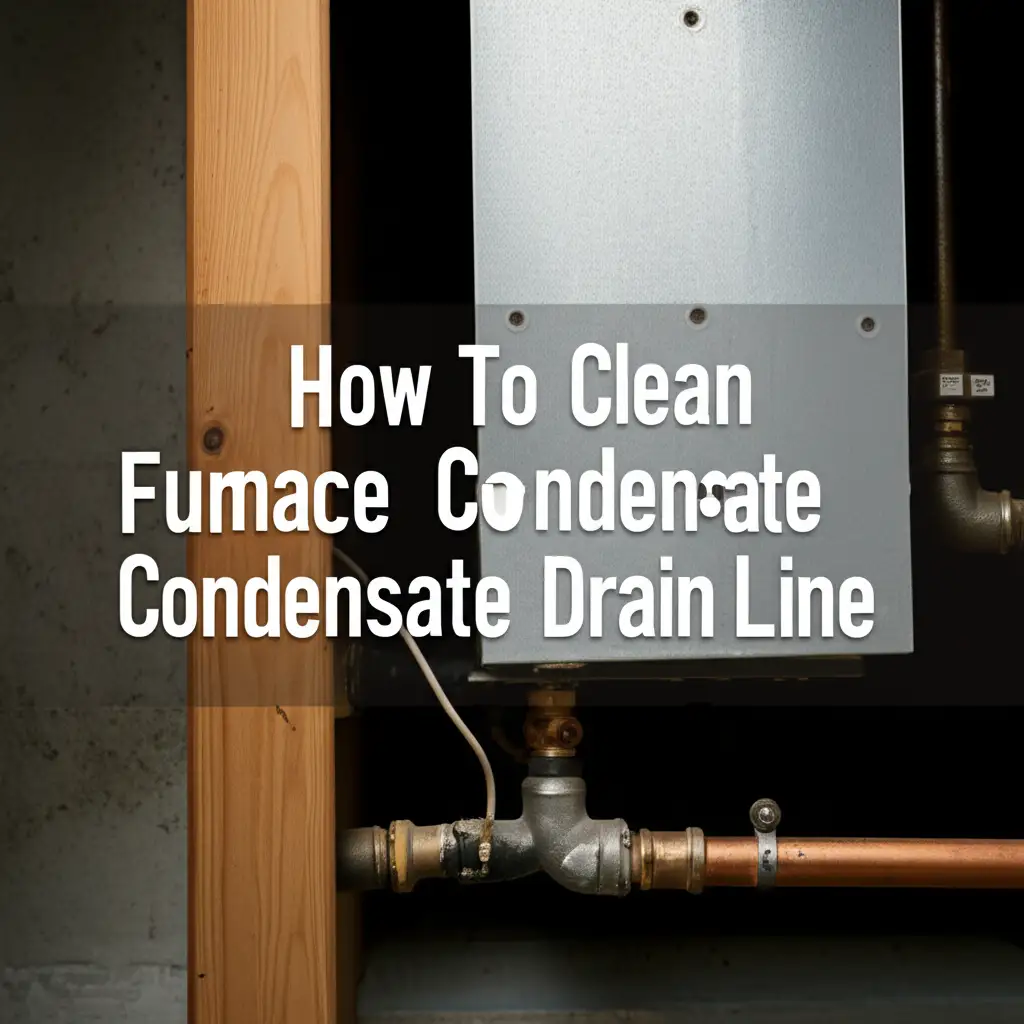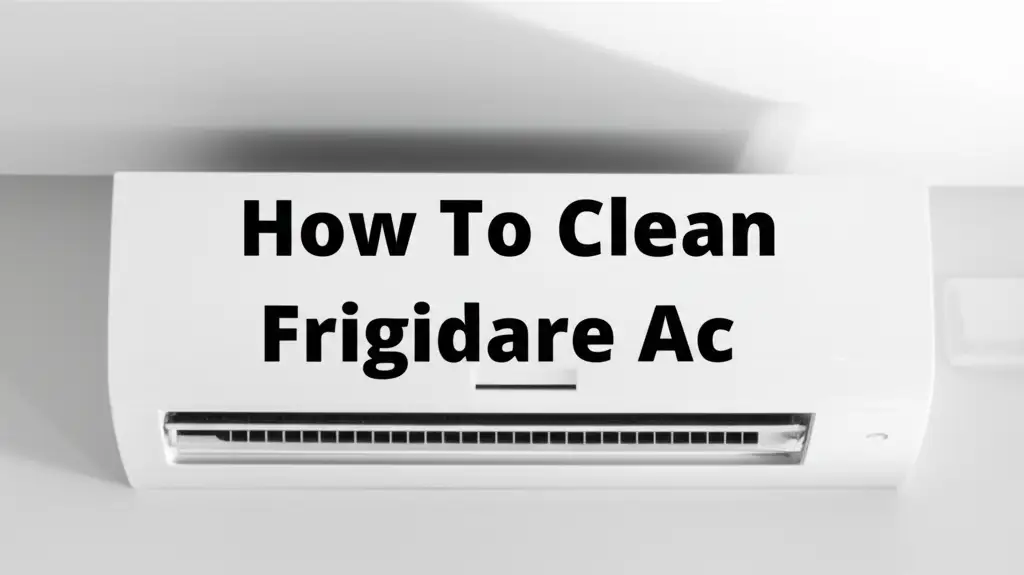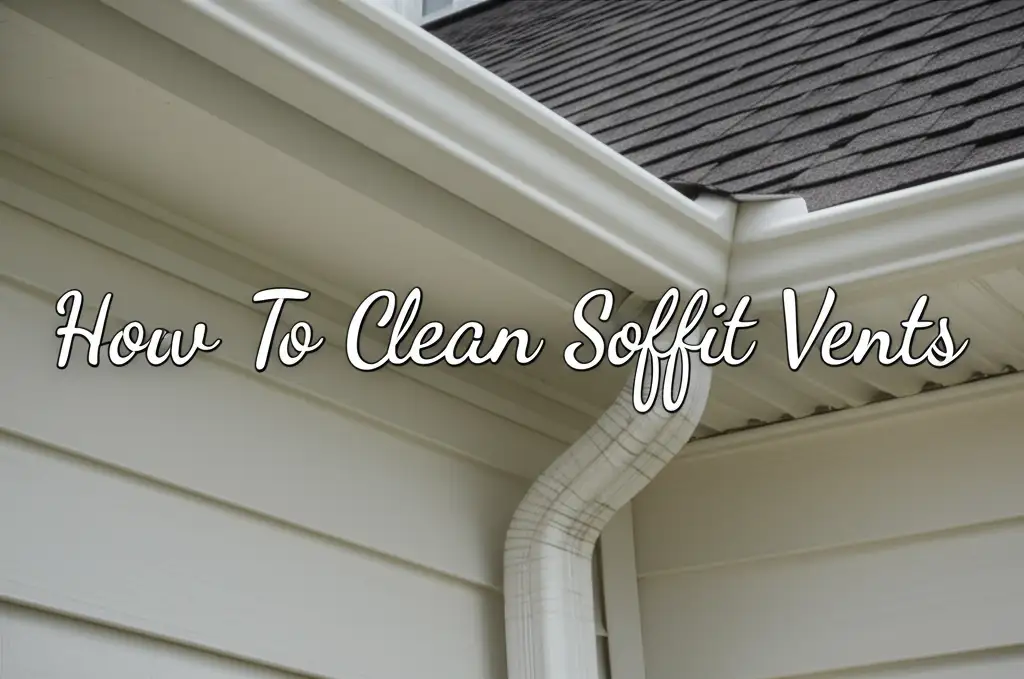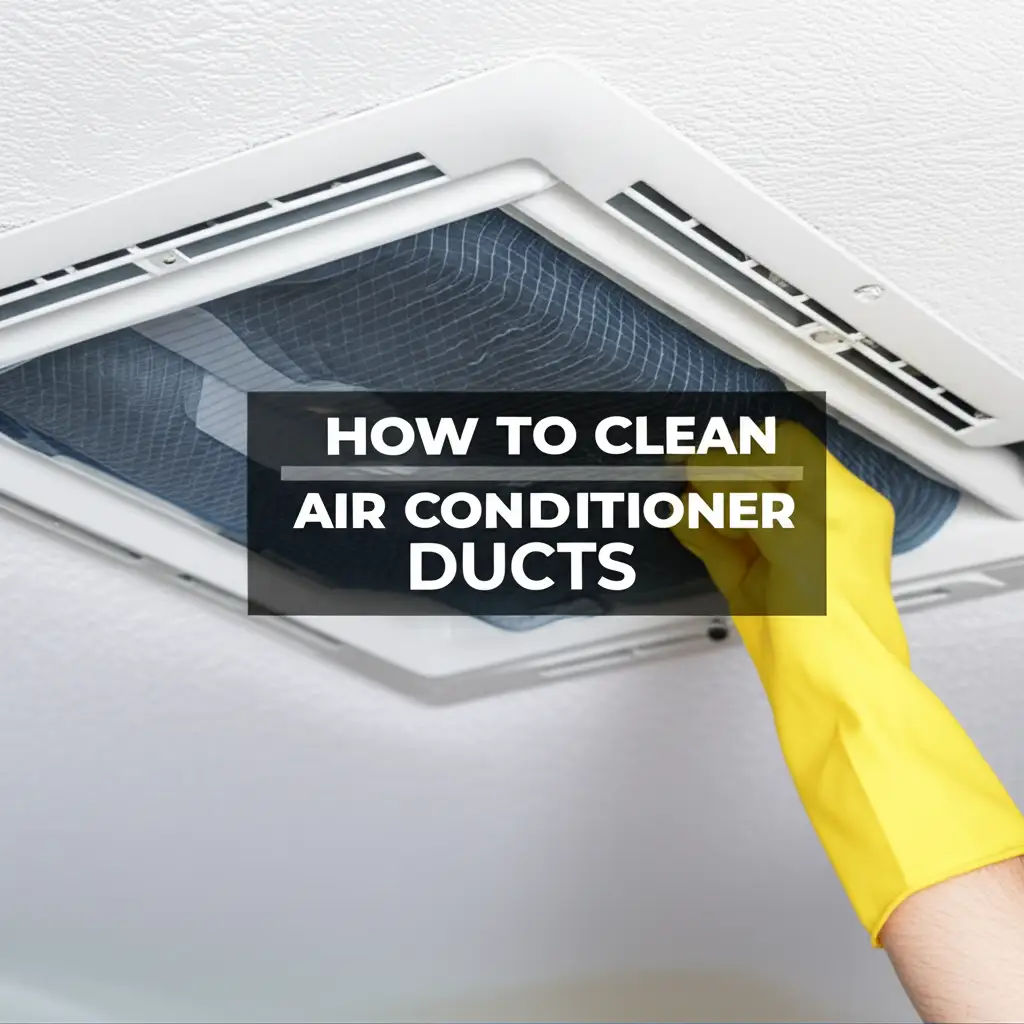· Home Maintenance · 13 min read
How To Clean Furnace Condensate Drain Line

Clean Your Furnace Condensate Drain Line for Peak Efficiency
Is your furnace acting up? You might notice a strange puddle near the unit. Perhaps your furnace stops working unexpectedly. These signs often point to a clogged furnace condensate drain line. This small pipe plays a big role in your heating system’s health.
A blocked drain line can cause significant problems. It can lead to water leaks, mold growth, and even furnace shutdowns. Understanding how to clean your furnace condensate drain line saves you trouble and money. I will walk you through the process step-by-step. We will cover necessary tools, cleaning methods, and preventative tips. Let’s make sure your furnace runs smoothly all season long.
Takeaway
- Identify symptoms of a clogged condensate drain line.
- Gather simple household tools for the cleaning process.
- Flush the drain line with a vinegar or bleach solution.
- Clear stubborn clogs using a wet/dry vac or air pressure.
- Perform routine maintenance to prevent future blockages.
To clean your furnace condensate drain line, locate the access point, clear any visible debris, and flush the line with a vinegar-and-water or bleach-and-water solution. You can use a wet/dry vacuum to suction out stubborn clogs. Regular maintenance prevents future blockages and ensures efficient furnace operation.
Why Your Furnace Condensate Drain Clogs
Your furnace produces water during its normal operation. High-efficiency furnaces create a lot of this condensate. This water needs a clear path to drain away from the unit. The condensate drain line carries this acidic water outside or to a floor drain.
Over time, this line can become a breeding ground. Algae, mold, and sludge build up inside the pipe. Dust and dirt from your furnace can also enter the line. This gooey mixture slows water flow. Eventually, it forms a complete blockage.
When the drain line clogs, water backs up. Your furnace has a safety switch to detect this overflow. This switch turns off your furnace to prevent water damage. This means no heat in cold weather. It is a critical issue that needs quick attention. Recognizing the signs of a clogged drain is the first step in furnace maintenance. You might see water around the furnace base. You could also hear gurgling sounds from the drain line. These are clear indicators of a problem.
Gathering Your Tools: What You Will Need
Before you begin, gather all the necessary items. Having everything ready saves time. It also makes the cleaning process safer and more efficient. Most of these tools are common household items. You might already own them.
Here is a list of what I recommend:
- Gloves: Protect your hands from grime and cleaning solutions.
- Bucket or Towels: Catch any spilled water or debris.
- Wet/Dry Vacuum (Shop-Vac): This is highly effective for suctioning out clogs.
- Funnel: Helps pour cleaning solutions into the drain line opening.
- White Vinegar or Bleach: These are common cleaning agents for mold and algae. You can learn more about how to clean AC drain line with bleach for similar issues.
- Water: For flushing and diluting solutions.
- Stiff Brush or Pipe Cleaner: Useful for scrubbing visible sections.
- Pliers or Screwdriver: For removing drain line caps or fittings.
- Safety Glasses: Protect your eyes from splashes.
Make sure your wet/dry vacuum is clean. You do not want to introduce new dirt into the system. Have plenty of old towels ready. This will handle any unexpected spills. Preparation is key to a smooth cleaning job.
Step-by-Step Guide to Cleaning the Condensate Line
Cleaning your furnace condensate drain line is a straightforward process. You just need to follow these steps carefully. I always start with safety. Then, I move to the actual cleaning.
Step 1: Turn Off Power to Your Furnace
Safety comes first. Go to your thermostat and set it to “off.” Then, find your circuit breaker panel. Locate the breaker that controls your furnace. Flip it to the “off” position. This prevents the furnace from turning on accidentally. It also protects you from electrical hazards. Confirm the power is off before touching any furnace components.
Step 2: Locate and Access the Condensate Drain Line
The condensate drain line is a PVC pipe. It usually runs from the furnace coil to a floor drain or condensate pump. It is typically a small, clear or white plastic pipe. Look for a small cap or a removable section near the furnace base. This is often where the line connects to a P-trap. The P-trap holds a small amount of water. This water creates a seal. It prevents furnace gases from entering your home.
Step 3: Clear Visible Blockages and Empty the P-Trap
Place your bucket or towels under the P-trap. Carefully remove the P-trap cap or the section itself. Be ready for water to come out. This water is likely dirty and contains sludge. Use your stiff brush or pipe cleaner to remove any visible gunk. You might see stringy algae or dark slime. For similar drain cleaning principles, you can review tips on how to clean black stuff in sink drain. This initial clearing helps the flushing process.
Step 4: Flush the Drain Line with Cleaning Solution
Now, it is time to flush the line. I recommend using a solution of white vinegar and water. Mix equal parts of each. For example, use one cup of vinegar and one cup of water. Vinegar effectively breaks down mold and algae. If the clog is severe, you can use a small amount of diluted bleach. Mix one part bleach with 16 parts water. Pour the solution slowly into the drain line opening. Use your funnel to avoid spills. Let the solution sit for 15-30 minutes. This allows it to work on the grime. You can find more insights on using these solutions for clogs by checking out how to clean with vinegar and baking soda, which explains their chemical reactions.
Step 5: Use a Wet/Dry Vacuum for Stubborn Clogs
If the flush does not clear the clog, use your wet/dry vacuum. Attach the hose to the end of the drain line that empties outside or into the floor drain. Ensure a tight seal around the hose. You can use duct tape if needed. Turn on the vacuum. Let it run for a few minutes. This creates strong suction. It should pull out any remaining blockages. You might hear gurgling or see gunk enter the vacuum. This method is similar to how you might clean an AC drain line with an air compressor but uses suction instead of pressure.
Step 6: Flush with Clean Water and Reassemble
After clearing the clog, flush the line with plenty of clean water. Pour several cups of water through the drain line. This removes any remaining cleaning solution and loose debris. Watch for clear water flowing freely. Once the water flows smoothly, reassemble the P-trap and any caps. Make sure all connections are secure. You do not want any leaks.
Step 7: Restore Power and Test Your Furnace
Return to your circuit breaker panel. Flip the furnace breaker back to the “on” position. Go to your thermostat and set your furnace to “heat.” Turn the temperature up higher than your current room temperature. Listen for your furnace to kick on. Observe the drain line. Watch for water flowing through it. Ensure there are no leaks. Your furnace should now operate normally.
Addressing Stubborn Clogs: Advanced Techniques
Sometimes, a simple flush might not be enough. Stubborn clogs happen. They require a bit more effort. I have encountered these often. Here are some advanced techniques I use when the basic steps fall short.
Using an Air Compressor
A small air compressor can provide a powerful burst of air. This blast can dislodge tough blockages. Connect the compressor hose to the drain line. Make sure you create a tight seal. You can use duct tape or a rubber adapter. Give short, controlled bursts of air. Be careful not to use too much pressure. Excessive pressure can damage the PVC pipe. Always wear safety glasses when working with compressed air. This method is effective for pushing out solid obstructions. It can be a very quick fix for a truly stuck clog.
Employing a Plumbing Snake
For very dense clogs, a plumbing snake is a good tool. A small, flexible drain snake can navigate the bends in the pipe. Insert the snake into the drain line opening. Push it gently until you feel resistance. Twist the snake to break up the clog. Slowly pull it back out. The snake will bring out the debris. This method directly addresses the physical blockage. It is useful when the clog is not just slime but includes larger particles.
When to Consider Chemical Cleaners
While I generally recommend natural solutions, some clogs are extremely difficult. In rare cases, a specialized HVAC drain cleaner might be considered. These are designed to break down organic matter without harming PVC pipes. However, always use these products with extreme caution. Read the manufacturer’s instructions carefully. Ensure proper ventilation. Chemical cleaners are a last resort. They can be harsh and are not always necessary. They also pose risks to your plumbing and personal safety.
Remember, patience is key. Sometimes, it takes a few attempts with these methods. If you are uncomfortable, or the clog persists, it is best to call a professional.
Preventative Maintenance for Your Condensate Drain
Regular maintenance prevents big problems. This is especially true for your furnace condensate drain line. A little effort now saves a lot of hassle later. I perform these steps regularly to keep my furnace running smoothly.
Routine Flushing Schedule
I recommend flushing your condensate drain line every few months. At least once per heating season is a good practice. Use a simple solution of white vinegar and water. Pour about a cup of this mixture into the drain line access point. Follow it with a cup of clean water. This routine flush washes away early signs of algae and mold. It keeps the line clear before clogs form. This proactive approach is very effective. It is similar to how you would clean a mini split drain line.
Keep the Area Around the Furnace Clean
Dust and debris are primary contributors to drain line clogs. Ensure the area around your furnace is clean. Vacuum around the unit regularly. Change your furnace air filter according to the manufacturer’s recommendations. A clean filter prevents airborne particles from entering the furnace. Fewer particles mean less sludge in your drain line. This simple step significantly reduces blockage risks.
Install a Condensate Drain Pan Tablet
You can purchase specialized tablets for condensate drain pans. These tablets slowly dissolve. They release chemicals that inhibit mold and algae growth. Place one in your furnace’s condensate pan. They last for several months. These tablets are an excellent preventative measure. They work continuously to keep your drain line clear. Always choose tablets designed for HVAC systems.
Inspect the Drain Line Regularly
Periodically check the drain line itself. Look for any kinks or damage. Ensure the line maintains a proper slope. Water needs to flow downhill naturally. If the line sags, water can pool. This creates prime conditions for clogs. Straighten any sags. Repair or replace any damaged sections. A quick visual inspection can spot problems early.
Following these preventative steps keeps your furnace condensate drain line clear. It ensures your furnace runs efficiently. This extends the life of your furnace. It also prevents unexpected breakdowns.
When to Call a Professional
While cleaning your furnace condensate drain line is often a DIY task, there are times to call an expert. Recognizing these situations can prevent further damage. It also ensures your safety. I know my limits, and so should you.
Persistent Clogs
You have tried flushing the line. You have used a wet/dry vac and even an air compressor. Still, the water is not draining. This indicates a deeply lodged or complex blockage. A professional HVAC technician has specialized tools. They can use power flushing equipment or more advanced snaking tools. They can also identify if the clog is further down the main drain system.
Water Damage or Mold Growth
If you notice significant water damage around your furnace, call a professional. This could mean a long-standing leak or a major overflow. Mold growth is another serious issue. Mold spores can spread throughout your home. HVAC technicians can safely clean up mold in and around your furnace. They ensure proper remediation. They will also find the source of the moisture.
Beyond the Condensate Line
Sometimes, the problem is not just the drain line. The issue might stem from the furnace itself. For example, a failing condensate pump can mimic a clogged drain line. If the furnace is making unusual noises or shutting down frequently, it might be more than a simple clog. A professional can diagnose underlying mechanical issues. They can perform complex repairs that are beyond a homeowner’s capability.
Lack of Confidence or Time
If you do not feel comfortable performing the cleaning yourself, that is perfectly fine. HVAC systems can be complex. Messing with them incorrectly can cause more damage. If you lack the time, a professional service is convenient. They can quickly resolve the issue. They ensure the job is done right. Always choose a certified and reputable HVAC company.
FAQ Section
How often should I clean my furnace condensate drain line?
You should clean your furnace condensate drain line at least once a year, typically before the heating season. For humid environments or if your furnace runs frequently, consider flushing it every three to six months. Regular cleaning prevents algae and mold buildup. This keeps your furnace running efficiently.
What causes a furnace condensate drain line to clog?
Furnace condensate drain lines clog due to the accumulation of algae, mold, dust, and sediment. High-efficiency furnaces produce acidic water as a byproduct. This creates a moist environment. This environment encourages microbial growth inside the drain line. These growths restrict water flow, causing blockages.
Can I use a chemical drain cleaner from the store?
I do not recommend using harsh chemical drain cleaners from the store. These products can damage the PVC pipes of your furnace’s drain line. They can also corrode internal furnace components. Stick to diluted bleach, white vinegar, or specialized HVAC drain cleaners designed for condensate lines.
What happens if I do not clean my condensate drain line?
If you do not clean your condensate drain line, it will eventually clog. Water will then back up into the furnace’s drain pan. Your furnace has a safety switch that detects this overflow. This switch will shut down your furnace to prevent water damage. This means no heat and potential water damage to your home.
Is a wet/dry vacuum necessary for cleaning the drain line?
A wet/dry vacuum is not always necessary for routine cleaning. However, it is highly effective for clearing stubborn clogs. If flushing with water and vinegar/bleach does not clear the blockage, a wet/dry vacuum provides strong suction to pull out the obstruction. It is a valuable tool for effective clog removal.
Can a clogged drain line cause water damage in my home?
Yes, a clogged condensate drain line can absolutely cause water damage. When the line backs up, the overflow pan fills. If the pan overflows, water can spill onto your floor, basement, or ceiling. This can lead to costly repairs, mold growth, and damage to surrounding structures.
Conclusion
A clean furnace condensate drain line is vital for a healthy home. It prevents water damage. It also ensures your furnace runs efficiently. I have walked you through the simple steps to clean this essential component. We covered identifying clogs, gathering tools, and performing the cleaning process. We also discussed advanced techniques for stubborn blockages.
Remember, regular preventative maintenance is your best defense. A quick flush with vinegar a few times a year goes a long way. Do not let a small pipe cause a big headache. Take control of your furnace maintenance today. If you face persistent issues or are unsure, always call a qualified HVAC professional. Keep your furnace condensate drain line clear for a warm and dry home.
- furnace maintenance
- condensate drain
- HVAC cleaning
- clogged drain
- DIY cleaning
- water damage prevention
- furnace repair




